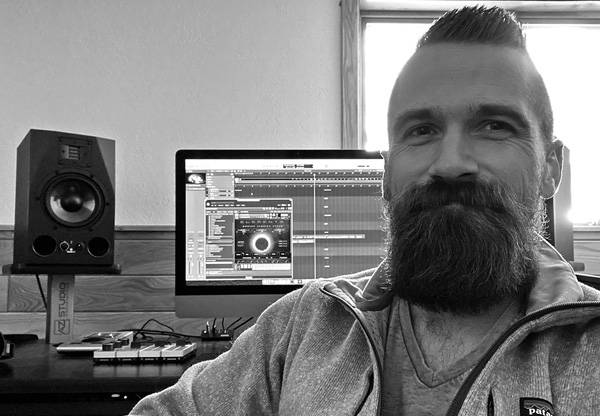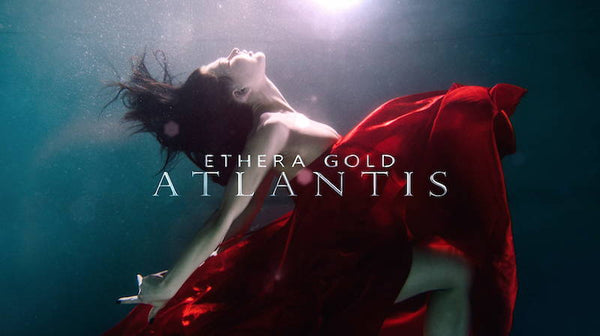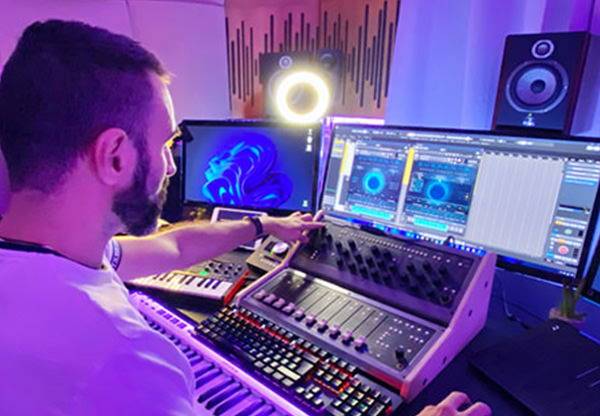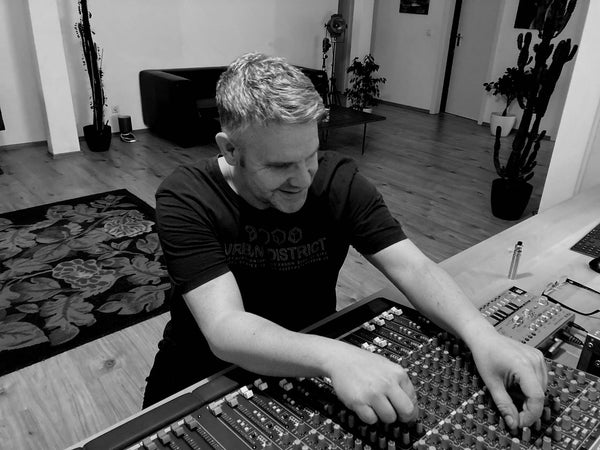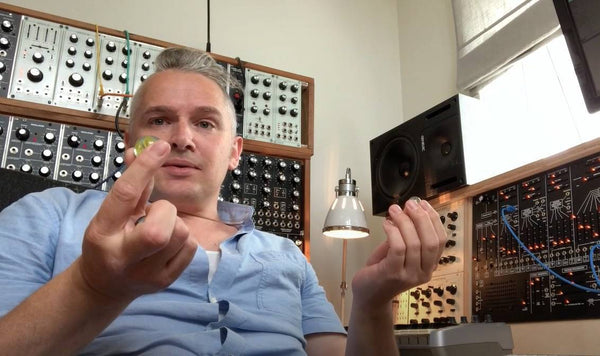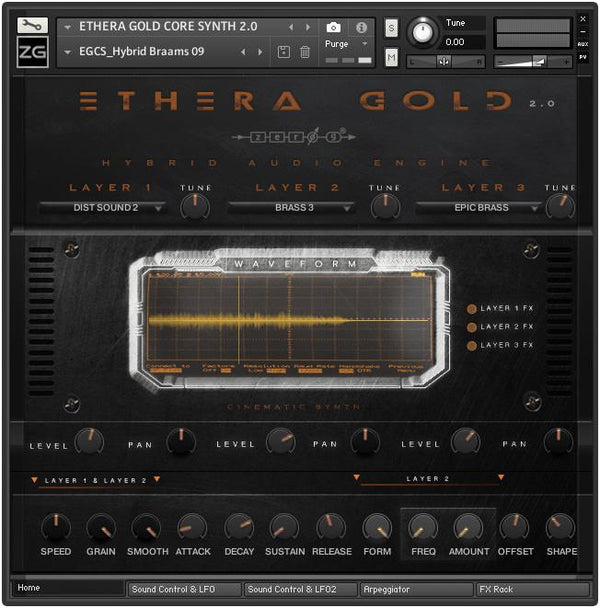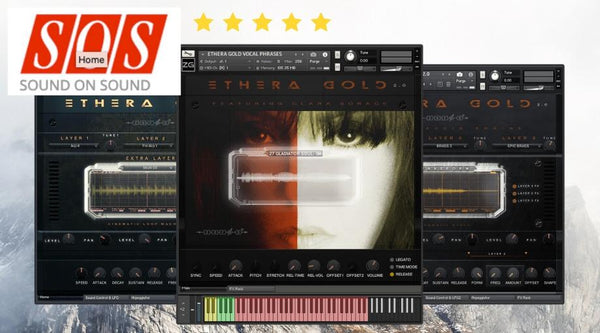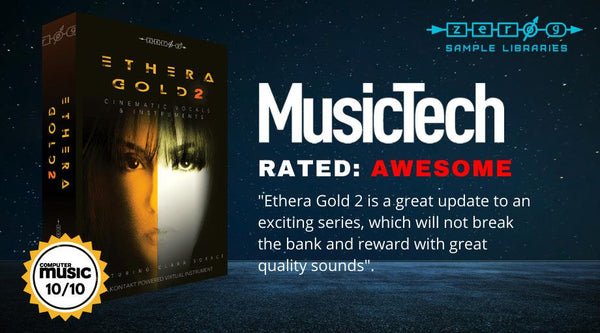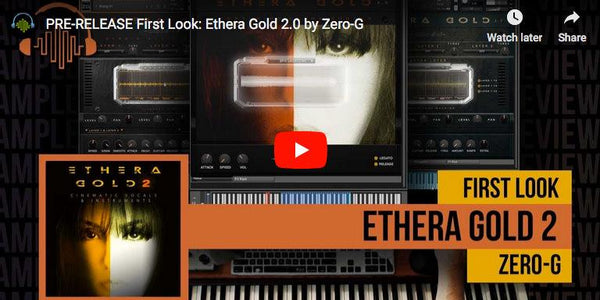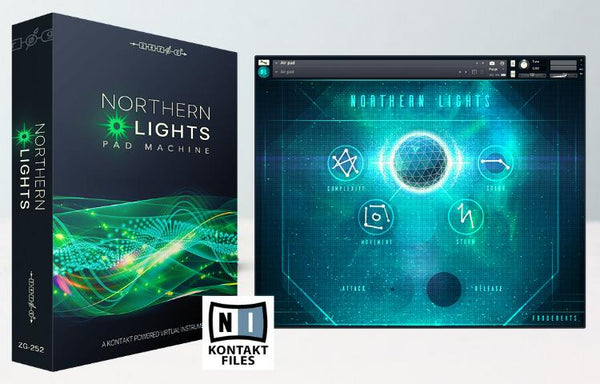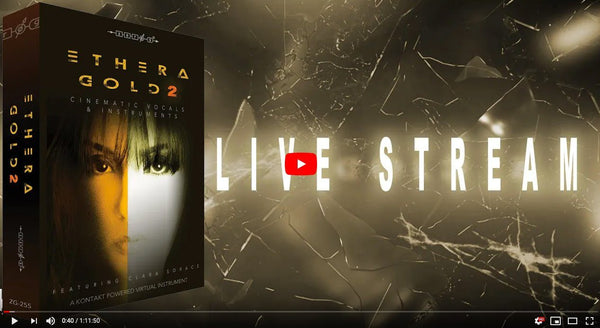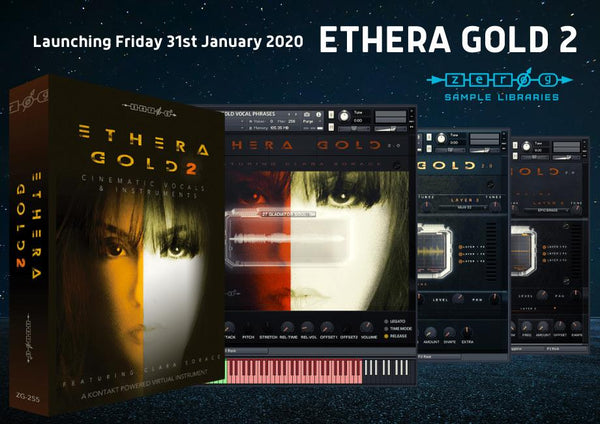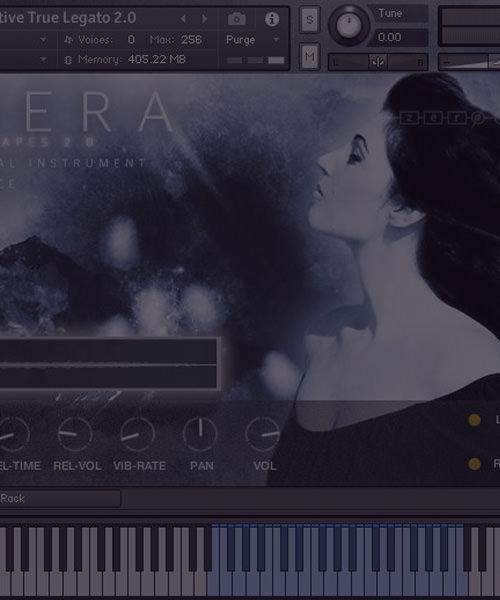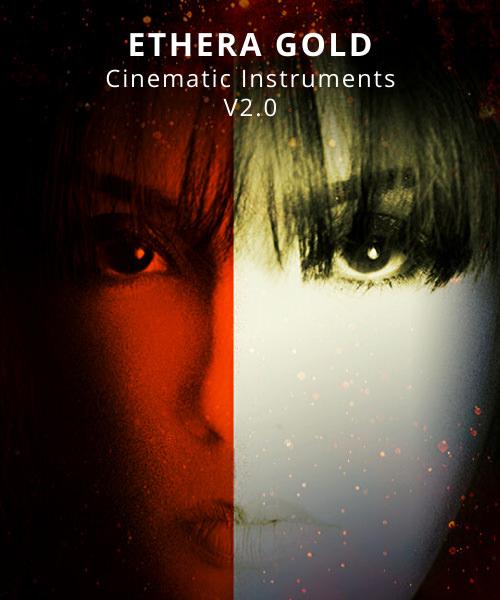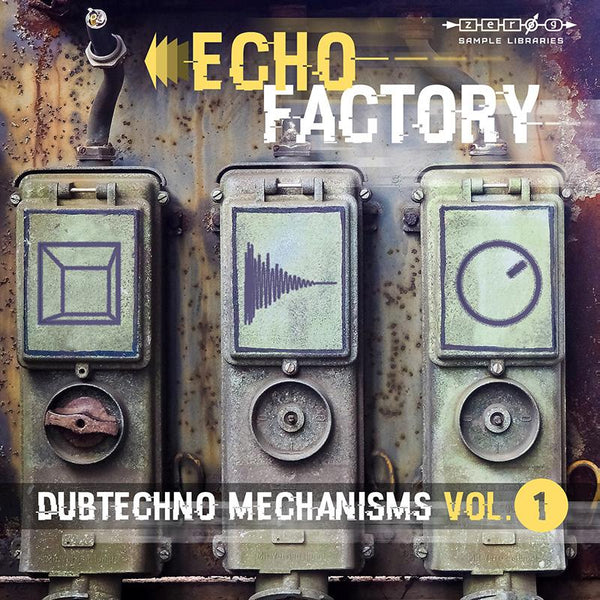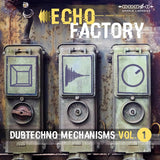Zero-G Echo Factory Dubtechno Mechanisms 1
Zero-G Echo Factory - Dubtechno Mechanisms 1 has been created by German Dubtechno producer Marco Rockstroh - aka ‘Smooth’. This full packed sample library is massively loaded with a total of 1,238 sounds and loops, along with 53 Kontakt 6 instruments and a unique Kontakt user interface. Adding to the essential sound of Dubtechno, filters, reverbs and delays all form part of the integral Kontakt GUI.
This unique and exclusive Zero-G sample library will give any Dubtechno producer a massive source of inspiration with a wide range of beautiful, dark, mellow, cold, warm and expressive samples and instruments.
For those of our customers who are not familiar with you and your work, could you tell us a bit more about your background?
I came in touch with electronic music around 1988, when I discovered EBM and the Belgium New Beat in a local record store, where I used to buy Acid- and House vinyls. EBM and New Beat felt very new and innovative at this time, and I was addicted at once. 2 years later, that Techno and Rave thing appeared, which was very energetic and revolutionary. I bought tons of that stuff by R&S, MusicMan, 80Aum, Overdrive or Harthouse on vinyls, but one day, I visited my first rave party and watched the DJs: They took the needles from the vinyls, but the music kept playing on. At this time, I recognised the topic "mixing". Short afterwards, I spent my whole money for 2 Technics SL-1210 turntables and a Vestax mixer, and learned the technical side of mixing, and the musical side as well. After first small gigs on secret parties, I played at bigger events. It was a great experience, to let the people feel the energy of that machine music called Techno, and I learned a lot about electronic music while playing and listening, like which sounds have been used, what structures are great, what build-up works best. Around 1994, the wish to produce own tracks had become that mighty, that I started first tracks using just my Home computer, an Amiga 500. Of cause, it was working with lots of restrictions, but it forced me to be creative. After 2 years of researching and producing, in 1996, I released my first 12-Inch on the german label "Draft Records" and several follow-ups. In 1997, the game changed completely for me: I bought my first synthesizer, a Roland Juno-6. It felt very different to work on real synthesis instead of moving blocks on a computer screen. What followed, is that classic story: A second synthesizer, a third one, a fourth and so on. With the years, I dived deeper into the sound universe and it changed the way, that I consumed or listened to music, extremely. And also, I became more and more interested about sound design. When looking back, I would say, electronic music has been inside of me all the time. I just had to find the right way to express myself musically.
What inspired you to start producing sample libraries?
Since I have been involved into electronic music, I always have been interested in the process and the technical side of creating sound and synthesis very much. As I started producing Techno and House, which is essentially "machine music", it was very exciting to explore and to discover all the opportunities to create sounds from scratch, but also to deal with the technical challenge. Techno as unconventional, technological and reduced form of music, based on less musical rules than other conventional musical styles, gave me pure freedom to discover sound design in a more intuitive and unaffected way. The first gear I bought was that classical cheap and used equipment with lots of technical restrictions and reductions, but it have been exactly these machines which forced me to be creative or to try things I never would have tried with all this mighty, expensive synthesizers or samplers. For example, not one single synthesizer I used offered any storage of settings, so I had to decide right away to use or not to use a created sound. The same thing on samplers back in these days: With a total of 1 MB or 2 MB storage for sampling, you had to be very creative to use every single bit of that machines. I think, starting and working this way influences me still today. In times of total recall, nearly unlimited options or molecular sound design opportunities, I prefer using uncomplicated machines because I like to stay close to the sound without having too much alternative options. From the beginning of my own productions, it was very important to me to use self created sounds, I understood this as my personal sound signature. In my understanding, creating a unique sound from scratch is worth to spent every single second, and it also is a very exciting process, because so many unexpected things can happen. Within the last years, the idea of creating a sample library grew constantly, but it always ended up using the created sounds directly and spontaneously for new tracks or on new releases. I am very critical about sound on my own productions, and lately I thought, if my sound creations inspire me that much, they also will have a chance to inspire or to support other musicians.
What sources of inspiration and education did you have when you first started producing music and software?
At the age of 11, I discovered the radio stations BBC and BFBS, which regular played the British Top 40. Besides that typical Pop music of the 80s, they played a lot of Synth Pop, which was completely different from the german music I have listened before. These Synth Pop sounds (like beats, pads, synths, keys, effects and so on) sounded so different, and I always tried to figure out, which instruments have been used to create these fresh sounds. From the inspirational side, I am musically very influenced by acts like Pet Shop Boys, Duran Duran, Depeche Mode, Gary Numan, Soft Cell and Yazoo, because I always felt some kind of magic about the sounds they used. Later on, I realised, that they used keyboards called synthesizers and drum machines, and from this moment, I was fascinated about these machines. Speaking about educational background, Techno with its early Rave era has been the perfect education to learn a lot about electronic music, musical structures, the energy and the functions and roles of sounds, how it all works together and what about the magic behind. The things I discovered and learned about Techno and electronic music also worked for me when producing House, Drum&Bass, Jungle and Chillout. I understood all these electronic music genres as revolution: Far away from that classical band thing, not restricted by that musical rules of styles like pop or jazz, and you needed just a few machines to express yourself musically. Finally, over the years my musical way led me a away from the hard, minimalistic Techno stuff to the more mellow and melodic side of electronic music, like Trance, Deep House, Lounge and Dubtechno: Here I found a way for me to combine my passion for Synth Pop influenced sounds and harmonies with the energy of electronic music. My first inspirational software I used, was ProTracker running on an Amiga 500 Home computer in 1989: It featured 4 mono tracks at 22 Khz with at least 1 MB of RAM, but to me it felt like a door into a new world when creating first Techno tracks on this machine. Still today, software is an important topic to me besides using hardware. Hardware offers me a direct and musical access to the sounds, software often makes things possible you can not realise based on hardware without spending incredible much money. So, I take the best of both worlds. I am not the kind of guy who puts too much philosophy into this topic, for me just one thing counts: If it sounds right, it is right.
Your focus is to only use primary hardware equipment - what would you say are your favourites?
There are a few machines I never would give away, but the rest of my studio equipment changes from time to time. And that for an important reason: I like to deal with different equipment regular to learn new things and to change the way I work. If I wouldn't work like this, I would come to a point where everything would feel like routine. It is exciting to learn how to program a new synth or effect, and it changes the way how you design sounds. I keep myself in motion, thats a great inspiration. Echo Factory Volume 1 has been created primary using the Roland D-50 (great for raw and breathy sounds), Roland JD-800 (realtime sound design), Roland JV-2080 (excellent source for pads), EMU ESI-4000 (sampling and LoFi effects), Korg PolySix (mostly basslines), Lexicon PCM-92 (longtail reverbs), SPL Vitalizer MKII-T (to add some spice and overtones), TC Electronic D-Two and M-One (delays and smaller rooms) and that cheap LoFi stuff by Behringer, which sounds exactly that metallic and cold as I like it. Speaking about the synth side, I have a clear favourite: The D-50 by Roland. Don't know, but this synth has its own life and sometimes acts very unexpected, which results in very unconventional sounds. My unit is from 1988, and it will be the last piece of gear I would give away - we are partners in crime.
How have you used these in your sound design and sample libraries?
In very different ways. One method I used was to play the synths live synced to the metronome of the DAW and to record these sessions as audio. In the next steps, I programmed the outboard effects. Finally, I recorded the audio file again including the mixing console and the effects. I also used the EQs of the mixing console to modulate the sounds. Another method: I recorded the audio files again and controlled the outboard effects in realtime via MIDI parameters to archieve very lively results. I also recorded an audio file a second time with a microphone to have a "real" room recording, and finally I mixed the original audio and the room recording together. The basslines all have been created on a Korg Polysix using MIDI events because of a precise timing, all the rest have been recorded live with synthesizers, effects and mixers.
Given your love of hardware kit - are there any specific virtual instruments which inspire you today?
One source of inspiration is the NI Kontakt, because of the option to create own and very unique instruments from scratch and to use the internal scripting option. As web programmer, I like any kind of codes, and in addition, in Kontakt I can create own GUIs and develop an instrument which exactly does what I want. Another favourite is the free Odin II by the Wave Warden. I really like the modular options and, most important, the sound, it is pretty good and has something I miss on some other softsynths. It is easy to handle, but you can even create complex and living sounds within minutes. Thats a good and important point for sound design. But more important as softsynths are the effects to me. I primary use outboard gear for effects, but I would not go so far to say, that hardware is better than software in the effect business. Both are different and both doing a great job, but I like more that haptic thing with knobs and faders, every time it lets me act much more musically than working with the computer mouse. On the software effects side, I really like to work with all that stuff by Valhalla. It delivers excellent results and sounds special very often. The last to mention is the TAL-X by TAL Audio. That delay inspires me also very much, it feels controllable and uncontrollable at same time, it has some kind of its own live, like the early tape echoes.
There are so many virtual instruments and sample libraries available these days - do you feel that this is a good thing or is less sometimes better?
Yes and no. I experienced the softsynth scene from the very first hour, when Steinberg established VST. That felt not only like a giant step forward, it was a giant step forward. Suddenly, the computer, which just triggered MIDI-instruments before, has become a musical instrument itself. The very first softsynths or effects sounded a little bit cheesy, but over the following years, more and more good developers and plugins and concepts appeared on the scene. Compared to our present, you had the chance to keep overview back in these days. Today, my personal impression is, that too many people try to do the same. For example, I think, it is not necessary to develop the hundredth emulation of a Fairchild compressor or the fiftieth emulation of a MiniMoog. There is pretty cool stuff out there, but most of it repeats itself, so it has become hard to find special or unique software. Other opinion on sample libraries: Here I like the option of a large selection. Samples can be a massive source of inspiration, even if you just pick a little fragment of a whole sound. Often it happens, that just one single sound you discover will direct you into a completely alternative musical direction than expected. If you are a multi-genre producer, sample libraries also will help to keep overview about new trends. If you are a beginner or new to a musical genre, sample libraries will help you to get started and to get familiar with a specific genre. And even if you are a very experienced or advanced producer, you always will find some hidden treasures or sound pearls in any sample library. House sounds can perfectly work on Lounge productions, Drum&Bass sounds are great on Techno productions. It's just about how sounds will be used in context.
Does the process of creating a virtual instrument/plugin get more challenging as technology advances?
I would say no. The technology does not advance as fast as expected. Its more the rising power of the machines and computers, we use, which lets us do more and complex things, but I don't feel that technology really changed extremely within the last 10 years. To write a piece of code or to design a GUI for an instrument still feels the same to me as years ago. The advantage today is, that you can address much more memory and CPU power than years before, so you can create much more complex things, which is essential for sound design. Thats my statement just as sound designer - as application programmer I would have answered this question contrary. Operation systems are changing continuously as well as algorithms or code structures. As sound designer and musician, I am far away from this side of technological changes.
Echo Factory is a truly fantastic product and is capable of producing extraordinary sounds - what was your inspiration behind this library?
I discovered Dubtechno 11 years ago and was very fascinated right away about its musical structures and minimalistic approach. I liked that reduced rhythms and the ensemble of just a few sounds benefitting from weird delays and huge reverbs - these effects are acting like a musical instruments in this genre and are very stylistic. I see Dubtechno as musical evolution of early Detroit Techno, which also was based on this minimalistic chord stuff. As producer, I always was looking for that special sounds and samples, but I found it much easier and more challenging, to create own sounds to have a maximum of control, especially about the modulation of sounds. In Dubtechno, its much about perfect un-perfection, so as sound designer I feel a great freedom to try lots of unconventional things - and I like to use effects more in a way instruments are used.
Can you tell us about your favourite features of Echo Factory 1?
The versatility of the sounds, they will even work in other musical genres. On the chords, it was important to me to give the user a choice between dry and processed sounds. Additionally I created some Kontakt instruments, so its a nice option to play sounds as an instruments alternatively besides the samples of the library. And, of course, as the title of the sample library already tells, its about big spaces and rooms.
What are the other stand-out features that potential users should be aware of?
My goal was to deliver excellent sound quality without compromise, so besides creating the sounds I have spent countless hours on recording and the post production of the recordings. The complete library is provided at 24 Bit and 48 Khz. There is also a small female sound part in the collection, some of the sounds have been created, played live and recorded by my wife Jana, who actually is not producing Dubtechno. It was interesting to see how she was interpreting Dubtechno, because she is basically an Ambient musician. I guess the user will discover this or that chord or pad and will feel a little, surprising difference. Additionally, I developed some Kontakt instruments and on some patches, the sounds will not only act on the velocity value of the user, also the filter or the filter envelope will act based on velocity, which will lead to more lively sounds. At least, all tempo based sounds are available in 120 BPM and in 127 BPM, as well as dry ones or processed ones.
So, a customer loads Echo Factory 1 into Kontakt for the first time, what’s the first thing you would suggest they do to really get a feel for the potential of the instrument?
Try out the chord section and the pads section first, they will give you a good impression about the potential and the quality of this bundle and it is a good way to get inspired or to evolve ideas for a track. Another good idea could be to check out the section with the Kontakt instruments, so you can play sounds directly and play around with the filters or the envelopes to form alternative sounds.
Who do you think Echo Factory 1 is most suitable for and why?
Well, primary I created this library for Dubtechno producers, but it also was important to me to keep an eye on other genres or alternative styles and to create something producers of other musical genres will also benefit from. So, many sounds of this library are also suitable for House, Deep House, Tech House, Techno or EDM. I am a multi-genre producer myself, and I always liked the idea to use sounds from different genres, so the idea was to provide a versatile library, but definitely primary with focus on Dubtechno. And as there is not just "that one" Dubtechno style, I carefully created sounds which will work on all these sub-genres of Dubtechno. I think, this collection of sounds and instruments will be interesting for any producer of an electronic music genre.
Do you have a relaxed approach in the initial stages of producing a sample library or do you focus on a specific sound?
I would say, both. My approach always is relaxed, because creating sounds is always an inspiring and surprising job with lots of fun. So, if I have a vision for a sample library of a specific musical genre, I tend to start very open minded. Of course, every genre has its own character and specific sound signature I have to consider, but eventually I am a wanderer between lots of electronic music genres. On producing a library, I have some kind of specific sound already in mind, but not that specific that I would say it has exactly to sound like this or that. If so, I just would reproduce something which already exists. So I always try to evolve myself a little bit further or to look beyond the musical horizon, but I always like to stay within a context to give it all a sense. The best things in sound design happens surprisingly or unexpected, I define that as unique snapshot.
Do you have plans to produce more sample libraries in the future?
Yes, for sure. As musician, I am deep into Dubtechno, Deep House, Tech House, Techno, Drum&Bass, Lounge, TripHop and NuJazz. Of course, they are partly pretty different from each other, but it is exactly this difference which keeps me open minded and interested. So, next up there will be a massive Lounge/Downbeat/NuJazz sample library, but I also will integrate elements and fragments of HipHop and Breakbeats.

